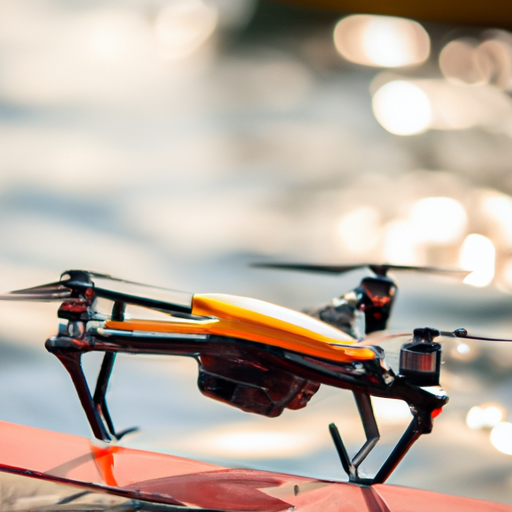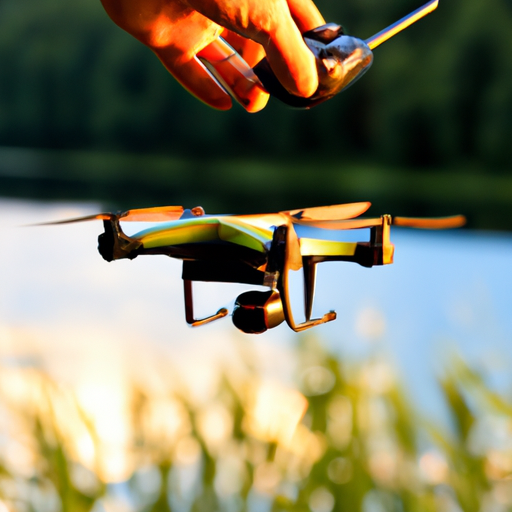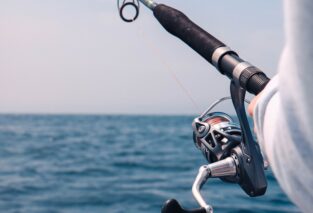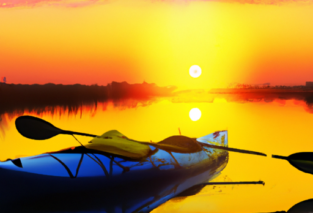If you’re a tech-savvy individual ready to dive into the exciting world of drone fishing, then “Getting Started With Drone Fishing: A Guide For Tech-Savvy Newbies” is the perfect tool for you. This comprehensive guide will equip you with all the knowledge and skills you need to embark on your thrilling fishing adventures using drones. Whether you’re a beginner or a seasoned angler looking to add some high-tech innovation to your fishing experience, this guide is your ultimate companion. From selecting the right drone to mastering the art of aerial casting, this guide covers it all, ensuring that you have a successful and exhilarating fishing expedition every time!
1. Safety First
When it comes to drone fishing, safety should always be your number one priority. By following a few simple guidelines, you can ensure a safe and enjoyable experience.
1.1 Understand the Rules and Regulations
Before you venture out into the world of drone fishing, it’s essential to familiarize yourself with the rules and regulations governing the use of drones in your area. Different countries and regions have varying laws regarding drone usage, so it’s crucial to stay informed and abide by the guidelines set forth by the local authorities. This will help you avoid any legal issues and ensure the safety of yourself and others around you.
1.2 Choose the Right Location
Selecting the right location for your drone fishing adventures is vital. Ideally, you should choose a wide-open space, away from crowded areas and power lines. Look for areas with minimal interference and obstacles to avoid any potential mishaps during flight. Additionally, it’s important to respect private property rights and obtain permission from landowners before using your drone for fishing purposes.
1.3 Check the Weather Conditions
Before heading out on your drone fishing excursion, always check the weather conditions. Windy weather and rain can greatly affect the stability and performance of your drone, making it difficult to fly safely. Avoid flying in adverse weather conditions, as it can increase the risk of accidents and damage to your equipment. Keep an eye on weather forecasts and plan your fishing trips accordingly to ensure a smooth and enjoyable experience.
2. Choosing the Right Drone
Selecting the right drone for fishing is crucial to ensure a successful and efficient fishing experience. Here are some factors to consider when choosing the right drone for your needs:
2.1 Consider the Payload Capacity
When selecting a drone for fishing, it’s essential to consider its payload capacity. You need a drone that can carry the weight of your fishing gear and bait without compromising its stability and flight performance. Look for drones specifically designed for fishing purposes, as they often offer a higher payload capacity to handle the additional weight.
2.2 Look for Long Battery Life
Battery life is another crucial factor to consider when choosing a drone for fishing. You want a drone that can stay in the air for an extended period, allowing you to cover more ground and spend more time fishing. Look for drones with long battery life or consider investing in extra batteries to increase your flight time.
2.3 Opt for GPS and Automatic Return Home Features
To ensure the safety and ease of operation during fishing sessions, it’s recommended to choose a drone equipped with GPS and automatic return home features. These features allow the drone to maintain a stable position, assist in navigating back to its takeoff point, and help you regain control in case of any emergency situations.

3. Selecting the Fishing Gear
Choosing the right fishing gear is crucial when it comes to drone fishing. Here are some essential considerations:
3.1 Use a Strong Fishing Line
Since drone fishing involves casting your line from the drone, it’s crucial to use a strong and durable fishing line. Opt for a high-quality braided line with a high breaking strength. This will ensure that you can reel in larger and heavier fish without the risk of snapping the line.
3.2 Choose the Right Hooks and Lures
When it comes to hooks and lures, it’s essential to choose the right ones that are suitable for drone fishing. Look for hooks that are sturdy and sharp, capable of firmly holding onto the fish and preventing any accidental releases. Additionally, consider using lures that are attractive and effective in enticing fish, increasing your chances of a successful catch.
3.3 Consider Using a Bait Release Mechanism
To enhance your drone fishing experience, consider using a bait release mechanism. This allows you to drop bait at a specific location quickly and efficiently. Look for bait release systems specifically designed for drones, ensuring a smooth and accurate release of your bait.
4. Preparing Your Drone
Before embarking on your drone fishing adventure, it’s crucial to properly prepare your drone for the task at hand. Here are some important steps to take:
4.1 Mount the Fishing Rig Correctly
Ensure that you mount your fishing rig securely and correctly onto your drone. This will help maintain the stability of the drone during flight and prevent any accidental disconnections or damage to the fishing gear. Follow the manufacturer’s instructions carefully to ensure proper installation.
4.2 Test the Payload Release Mechanism
Before heading out to fish, it’s essential to test the payload release mechanism of your drone. This will help you determine if it’s functioning correctly and ensure that your bait or fishing gear releases smoothly when needed. Practice several test drops in a controlled environment to get a feel for the release mechanism and make any necessary adjustments.
4.3 Ensure the Drone is Properly Calibrated
To ensure optimal performance, it’s important to calibrate your drone properly before each fishing session. Calibration helps the drone maintain stability, accuracy, and responsiveness during flight. Follow the manufacturer’s instructions to calibrate the drone’s compass, IMU, and other sensors. This will help prevent any flight issues and ensure a safe and enjoyable fishing experience.

5. Understanding the Basics of Drone Fishing
Before you set off on your first drone fishing adventure, it’s crucial to understand the basics of operating a drone and how it relates to fishing. Here are some key points to consider:
5.1 Learn How to Operate the Drone
Familiarize yourself with the controls and features of your drone before attempting drone fishing. Practice basic maneuvers such as takeoff, landing, hovering, and maneuvering the drone in different directions. This will help you build confidence and improve your piloting skills, ensuring a safe and precise fishing experience.
5.2 Understand the Concept of Drone Fishing
Drone fishing involves using a drone to cast and release your fishing line, allowing you to fish in areas that are otherwise difficult to reach. Understanding the concept of drone fishing will help you strategize and make informed decisions while fishing. Take the time to learn about casting distances, release techniques, and how to use the drone to your advantage when targeting specific fish species.
5.3 Practice Drone Hovering and Precision Flying
Drone hovering and precision flying are essential skills to master for successful drone fishing. Practice hovering your drone at various altitudes and maintaining a stable position. This will help you position the drone accurately for casting and increase your chances of catching fish. Additionally, practice precision flying to navigate the drone through tight spaces and avoid obstacles, ensuring a safe and efficient fishing experience.
6. Fishing Techniques and Tips
To maximize your chances of success while drone fishing, here are some fishing techniques and tips to keep in mind:
6.1 Assessing the Fishing Spot
Before casting your line, take the time to assess the fishing spot carefully. Look for underwater structures, drop-offs, or areas where fish are likely to gather. Use the drone’s camera to get a bird’s eye view of the water and identify potential fishing hotspots. By assessing the fishing spot beforehand, you can strategically cast your line and increase your chances of a successful catch.
6.2 Casting the Line with Precision
Casting your fishing line with precision is key to drone fishing. Take your time to position the drone correctly, align it with your desired casting location, and release the line at the right moment. Practice casting techniques to improve your accuracy and prevent the line from tangling or getting caught on the drone. Remember, patience and practice are key to mastering the art of precise casting.
6.3 Using the Drone to Locate Schools of Fish
One of the advantages of drone fishing is the ability to locate schools of fish from above. Utilize the drone’s camera to scan the water and search for signs of fish activity such as baitfish schools, surface disturbances, or visible fish. By locating fish schools, you can position your drone and cast your line in highly productive areas, increasing your chances of a successful catch.
7. Managing Battery Life and Flight Time
Battery life and flight time are critical factors to consider when drone fishing. Here are some tips to manage your battery life effectively:
7.1 Plan Your Fishing Trips Accordingly
To make the most of your drone’s battery life, plan your fishing trips accordingly. Choose the optimal time of day when fish are most active, allowing you to maximize your fishing time. Additionally, plan your flights in a way that minimizes unnecessary hovering or flying time, ensuring that you have enough battery capacity to fly back to the shore safely.
7.2 Monitor Battery Levels During Flight
Stay vigilant and keep an eye on your drone’s battery levels during flight. Most drones have a battery level indicator that provides real-time information on remaining power. Use this information to gauge when to start heading back and ensure that you have enough battery life for a safe return. It’s always better to err on the side of caution and prioritize returning to the shore with ample battery life.
7.3 Optimize Flight Path for Maximum Efficiency
To conserve battery life and improve flight time, optimize your flight path for maximum efficiency. Plan your flights in a way that minimizes unnecessary maneuvering or flying against strong winds. Take advantage of the drone’s GPS capabilities to establish an efficient flight route, allowing you to cover more ground and conserve battery power. By optimizing your flight path, you can extend your fishing time and increase your chances of a successful outing.
8. Troubleshooting and Maintenance
Despite taking precautions, issues and malfunctions can occasionally occur. Here are some troubleshooting and maintenance tips to keep your drone in top condition:
8.1 Troubleshoot Common Issues
Familiarize yourself with common drone issues and troubleshooting techniques. This will help you address any minor issues that may arise during fishing sessions. Learn how to perform basic troubleshooting steps such as restarting the drone, recalibrating the compass, or addressing GPS signal errors. By being prepared to troubleshoot common issues, you can minimize downtime and ensure a smooth fishing experience.
8.2 Clean and Maintain Your Drone Regularly
Regular cleaning and maintenance are essential to keep your drone in optimal condition. After every fishing session, carefully clean your drone, removing any dirt, sand, or debris that may have accumulated. Inspect the drone for any signs of wear or damage and address any issues promptly. Follow the manufacturer’s maintenance guidelines for regular maintenance tasks such as propeller check, motor lubrication, and firmware updates. By maintaining your drone regularly, you can prolong its lifespan and ensure reliable performance.
8.3 Handle Malfunctions and Crashes Properly
In the unfortunate event of a malfunction or crash, it’s important to handle the situation properly. Safety should always be your priority, so ensure that you and those around you are not at risk of injury. If your drone crashes into the water, retrieve it as soon as possible and assess the damage. Dry out the drone thoroughly and inspect it for any signs of water damage before attempting to fly again. If significant damage has occurred, contact the manufacturer or a professional service center for repairs or guidance.
9. Drone Fishing Etiquette
To ensure a positive experience for everyone involved, it’s important to observe proper drone fishing etiquette. Here are some key points to keep in mind:
9.1 Respect Fishing Regulations and Conservation
Always adhere to fishing regulations and conservation guidelines in your area. Respect the bag limits, size restrictions, and other rules specific to the fish species you are targeting. Additionally, be mindful of protected areas and sensitive ecosystems, and avoid fishing in prohibited zones. By being responsible and respectful, you contribute to the preservation of the environment and ensure a sustainable fishing experience.
9.2 Be Aware of Other Anglers and Water Users
When drone fishing, it’s essential to be aware of other anglers and water users around you. Respect their space and give them plenty of room to fish or engage in other water activities. Communicate and coordinate with fellow anglers, ensuring that your drone’s presence doesn’t interfere with their fishing experience. By being considerate and mindful of others, you contribute to a positive and harmonious environment for everyone.
9.3 Follow Local Drone Regulations
In addition to fishing regulations, it’s important to follow local drone regulations when drone fishing. Different areas may have specific rules and restrictions on drone usage, including altitude limits, no-fly zones, and registration requirements. Familiarize yourself with these regulations and ensure that you are in compliance. This will help you avoid any legal consequences and maintain a positive reputation within the drone and fishing communities.
10. Exploring Advanced Techniques and Accessories
Once you have mastered the basics of drone fishing, you can explore advanced techniques and accessories to enhance your experience further. Here are some possibilities worth considering:
10.1 Deep Sea Drone Fishing
If you’re seeking an exciting challenge, consider trying deep-sea drone fishing. This involves using a drone to drop your line into deeper waters, targeting offshore species. Deep-sea drone fishing requires a drone with a higher payload capacity and is best suited for experienced drone fishers. Be sure to research and prepare adequately for the unique challenges presented by deep-sea fishing.
10.2 Drone Fishing with Underwater Cameras
Add an extra layer of excitement and anticipation to your drone fishing adventures by using underwater cameras. These cameras can attach to your fishing line or drone and provide live footage of the underwater action. By monitoring the camera feed, you can better assess the presence of fish and adjust your fishing techniques accordingly. Just make sure to choose waterproof camera options that can withstand being submerged in water.
10.3 Using Fish Finders and GPS Tracking Devices
To improve your fishing efficiency, consider using fish finders and GPS tracking devices in conjunction with your drone. Fish finders use sonar technology to detect fish and underwater structures, helping you locate productive fishing spots. GPS tracking devices can enhance your drone’s navigation capabilities, enabling you to mark and revisit successful fishing locations. By utilizing these advanced accessories, you can increase your chances of a successful and rewarding drone fishing experience.
In conclusion, drone fishing offers an exciting and innovative way to enjoy the thrill of fishing. By prioritizing safety, choosing the right equipment, and mastering the necessary skills, you can embark on successful fishing adventures from above. Remember to always follow the rules and regulations, respect the environment and fellow anglers, and continue expanding your knowledge and techniques for an unmatched drone fishing experience.





